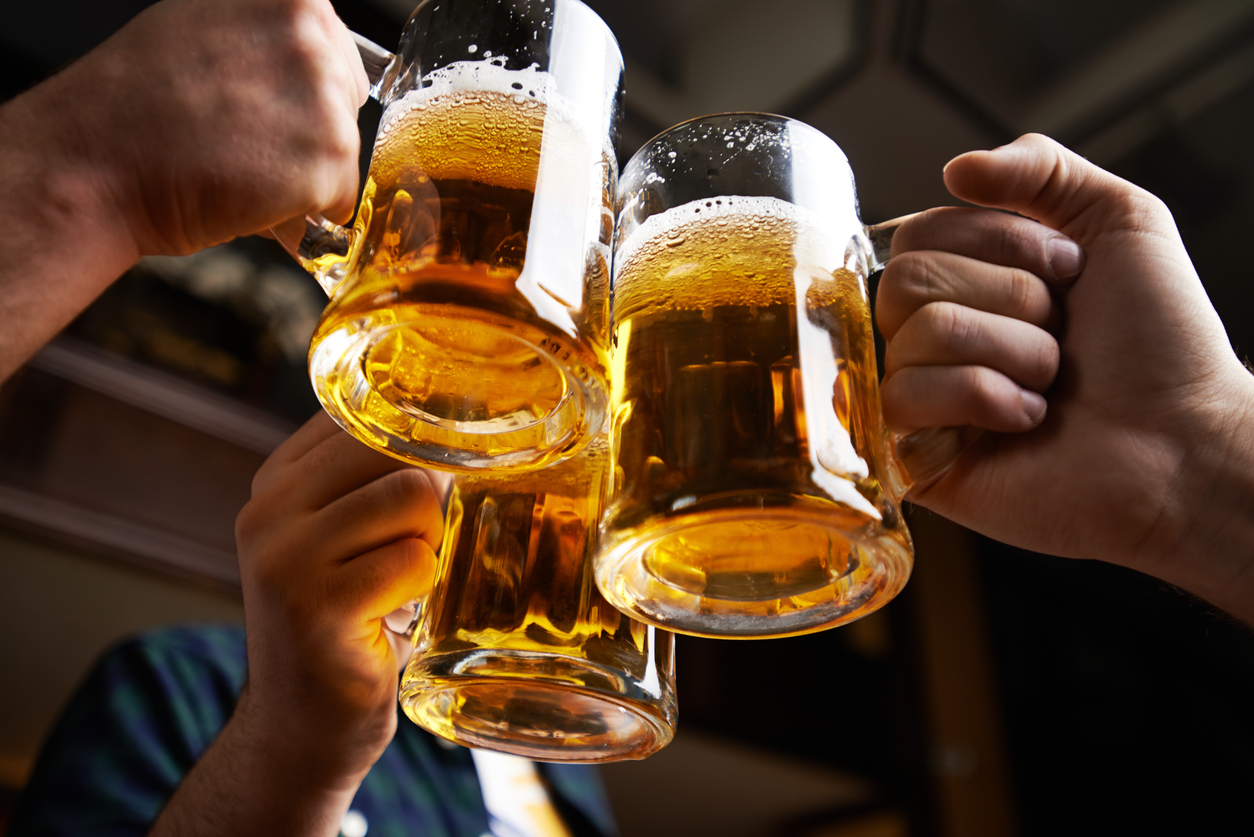More Than One in Nine British Men Binge Drink
It is the Portuguese who came in first in overindulging in alcohol consumption in Europe, according to a new study, with British men and women, respectively, coming in second and third in the area of over 21 countries. The Netherlands was also right up there against the UK for women, although those gathering the information concluded that British males take in three times as much as the typical European woman.
he Netherlands was also right up there against the UK for women, although those gathering the information concluded that British males take in three times as much as the typical European woman.
Norwegian University of Science and Technology Professor Terje Eikemo, has conducted the first study of its kind that matches up European consumption habits when it comes to alcohol by scoping out what they drink and the frequency.
According to Eikemo, “People from Britain, Ireland and Portugal drink most, but the richer you are, the more you drink, too. The Irish drink the most overall. Binge drinking is most widespread in Portugal, with Britain in second place.”
Eikemo posits that the solution resides in making the quality of life of the British working class better.
“While alcohol consumption generally is more frequently utilised among higher social classes, problematic drinking including binge drinking is more common in the lower social classes,” according to Eikemo, who continued, “An important reason for this is that lower classes live under poorer living conditions and work under tougher psychosocial and physical conditions.
“The most effective way of improving the drinking pattern in the UK, as in other European countries, would be to improve people’s conditions under which they live, work, and age.
“Banning alcohol is not the way to go. Instead, we need to help people making better choices.”
The research defined binge drinking is as consumption by men exceeding eight units per day, with women who drank more than six units, with the eight being slightly over three pints of beer at four strength. The women, at six units, would be consuming just over two 175 ml glasses at a wine strength of 13 percent.
Eikemo and his colleagues use a methodology which questioned respondents by country utilising illustrated cards depicting alcohol units, along with data as to quantities and types of alcohol that are found in the varies regions of Europe. Then the respondent’s choices were figured in based on grammes of alcohol.
“‘Our results show a huge difference in how much men and women drink on average across Europe, with men drinking twice as much – but in the UK men drink three times as much,” Eikemo explained, continuing, “We are concerned about the consequences for health.”
Polling results of the 40,000 people involved (including 2,000 in the UK) indicated that nearly two in five men in Britain imbibe over one time per week, alongside a quarter of women. British women, as compared to those in the Czech Republic and Ireland, partook of alcohol more often on weekdays, with 3.6 units on average. But it also determined that British women had more to drink on weekends with 6.4 units as typical on Fridays, Saturdays and Sundays than drinkers in any other country excepting Hungary and Ireland. Yet, men drank nearly two times as many units of alcohol as did the women.
The survey data also said that pints of beer and alcopops continue to be the most favoured ways to imbibe.
The Norwegian University study is part of the European Social Survey, which is conducted over a large by a country study which occurs every two years stretching over 30 countries. It indicates that binge drinking in Portugal at 17.5 percent tops that of one in nine British males who binge drink which measures out to 11.2%. While 5.2 percent of the women of Portugal binge their consumption, the Netherlands follows on their heels at 5.1 percent. This is compared to four percent of the females in the UK. Those in Israel, as well as Eastern and Central Europe, consume the least alcohol.
“In the past,” said Eikemo, “we could say that drinking alcohol and smoking affect people’s health, for example. Now we can go farther back in the causal chain, and identify where measures should be taken.”
He indicated that the data say those who have the most money drink more, while continuing that, “when we compare ourselves to others, we can see what’s working and countries can shape their health systems based on systems that are succeeding in other countries.”
It is interesting to note that inquiries regarding imbibing alcohol had to be designed so all countries would see them in the same light. This proved to be a significant undertaking because of different drinking styles as well as the varieties and amounts of alcoholic types were often quite different. This is where the previously mentioned “show cards” were utilized to show equivalencies. What is treated as a large glass of wine vis a vis a small one, as well as a half litre and pint of beer, and a bottle or can of beer can be very different.
Eikemo showed that by developing the various sets of cards, “we were able to convert people’s responsesabout their drinking habits to the number of grams of alcohol.”
The European Union (EU) has the survey results.

